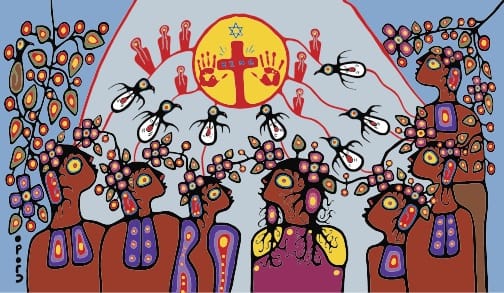Seven Fallen Feathers and Systemic Racism in Schools

This week I finished reading Seven Fallen Feathers: Racism, Death, and Hard Truths in a Northern City, by Tanya Talaga. The book is about the deaths of seven Indigenous high school students in Thunder Bay, Ontario over the course of eleven years. Facing inadequate education, these students left their home communities to pursue a high school education hundreds of miles away. In telling the seven students' stories, Talaga illustrates how systemic racism caused these deaths.
At times the book was a haunting read. It is easy to draw correlations between the residential school system and what is currently happening. In fact Talaga starts by describing the story of Chanie Wenjack, a child who died trying to escape from a residential school. Knowing what happened with residential schools, it is tough to learn that many Indigenous communities still must send their children away to get an education. Many people talk big about Truth and Reconciliation, but there is still such a long way to go.
Seven Fallen Feathers provides an example of how systemic racism affects Indigenous people in Canada. Systemic racism is policies or practices in institutions that end up excluding or promoting a particular group of people. Examples include when Indigenous jurors are rejected from a jury or when Indigenous communities must fight for access to education that is taken for granted elsewhere in Canada.
Often, when people think of racism, they think of individual racism. For instance, a student calls another student a racial slur. As an educator, I know how to address this type of racism. Systemic racism is harder. In my experience, many people have trouble even acknowledging its existence. It makes them uncomfortable. After all, if the system favours white people, does that mean I've benefited from racism? What does that say about me and my success? Does that make me complicit? These are hard questions, and it can be much more comfortable to ignore them or even discount them. I think for me it is time to start asking the difficult questions.
I don't have much control over the system at large, but I do in my own classroom. I need to start asking how systemic racism exists in my own context. How does privilege or lack of privilege affect the achievement of my students? What can I do about that? Am I adapting appropriately for all students? Are my lessons relevant to all students? Do the books we read and the topics we address have appropriate cultural representation? Do they all feel like they have a voice and the power to change things in my class? Do I have high expectations for everyone?
In reading Seven Fallen Feathers, I got to thinking about students who are in foster care. In Manitoba, 90% of the 10,700 children in government care are Indigenous, even though Indigenous people are only 17% of Manitoba's population. This statistic has its roots in the intergenerational trauma caused by residential schools and systemic racism in Canada. Supporting these students can be challenging. Some of them come to my class with trauma that is far distant from my experiences. It can be easy to forget when I'm asking them to do an assignment that school might not be their top priority. And rightfully so. If a child has been uprooted from their family and is feeling alone, uncertain, and powerless, I can understand why they'd have limited interest in writing a novel response or adding fractions.
So what can I do in the face of a system that is unjust? I don't pretend to know all the answers (or even some of them), but I am willing to ask hard questions. How is my school supporting these kids? More importantly, how are we failing to support them? What can we do about it? I intend to investigate these and other questions to promote a society that is fair, equitable, and just for all my students.

